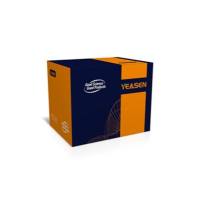Neuronal Network Imaging in Acute Slices Using Ca2+ Sensitive Bioluminescent Reporter
互联网
互联网
相关产品推荐

TUBB3 (Neuronal Marker) Mouse mAb(bsm-33177M)-50ul/100ul/200ul/500ul/200ug
¥1180

Nanog-GFP报告基因质粒(Nanog GFP Reporter Plasmid)
¥3365

KCNJ10/KCNJ10蛋白Recombinant Human ATP-sensitive inward rectifier potassium channel 10 (KCNJ10)重组蛋白ATP-dependent inwardly rectifying potassium channel Kir4.1 Inward rectifier K(+) channel Kir1.2 Potassium channel, inwardly rectifying subfamily J member 10蛋白
¥9720

重组人Carbonic anhydrase II/CA2蛋白
¥4520

MKL1/MKL1蛋白/MKL/myocardin-like protein 1 (Megakaryoblastic leukemia 1 protein) (Megakaryocytic acute leukemia protein)蛋白/Recombinant Human Myocardin-related transcription factor A (MRTFA), partial重组蛋白
¥69
相关问答

